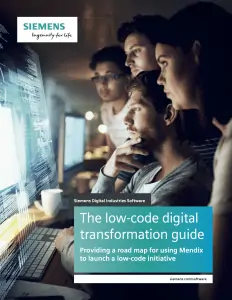
In the next phase, the B2B website becomes an intelligent layer that serves both human visitors and AI intermediaries with the same level of clarity, nuance, and trust.
The shift is already here: most B2B buyers now begin with an AI assistant, not a homepage. They ask ChatGPT, Claude, or Gemini to define requirements, shortlist vendors, compare options, and summarize trade-offs, often before a human ever clicks a link. In the near future, those AI agents won’t just research you; they’ll talk directly to your own AI layer.
That “agent-to-agent” exchange becomes the first sales conversation.
This evolution creates both an exposure risk and a growth opportunity. If your digital footprint isn’t legible to machines, critical facts get omitted or guessed. If it is, you’ll be surfaced more often, with the right narrative, long before a human asks for a demo.
See also: The Rise of Conversational AI Applications
The visibility gap: what AI can’t find, it can’t recommend
A recent analysis of more than 1,150 B2B websites found that 29.5% of essential buying information is missing; things like pricing clarity, competitive positioning, security credentials, case-study evidence, and KPI-linked problem framing. When those facts aren’t present or structured clearly, AI tools default to “unknown,” or they fill the gaps with generic market assumptions. Either outcome erodes trust and knocks you off shortlists.
Key patterns behind the gap:
- Pain points without metrics: Vague problem statements with no KPIs to repeat back to the buyer.
- Pricing opacity: AI summaries fall back to “contact sales,” adding friction and lowering inclusion odds.
- Competitive context missing: Without explicit “how we differ,” AI averages you into the category.
- Security/certifications absent: In regulated spaces, missing proof often yields disqualification before a visit.
The readiness gap is uneven across segments. SMBs struggle most due to documentation rigor, while growth-stage firms show the lowest missing-content rates, suggesting modern content practices matter more than size or model.
Why this matters for marketing leaders
Buyers now complete most of their research before talking to sales, and today they do that research with AI. If your site doesn’t answer the canonical buyer questions (“What do you do? What does it cost? How do you compare? Is it secure? Will it work for a company like mine?”) in a machine-parsable way, you simply won’t be considered.
This isn’t a chatbot problem; it’s a content and structure problem. Many B2B sites still emphasize internal processes (forms, SDR routing, generic CTAs) over buyer-centric clarity, creating friction for both humans and machines.
A practical playbook for AI-legible marketing
Make core facts explicit and structured
Publish the answers AI agents look for, in unambiguous, scannable formats:
- Problem + KPI framing: Tie each pain point to measurable outcomes (latency, downtime, accuracy, CAC, etc.).
- Pricing clarity: If you can’t publish exact numbers, state tiers, drivers, or ranges to avoid “unknown pricing” summaries.
- Competitive position: Spell out who you’re compared with and how you differ. Don’t make AI infer it.
- Security & compliance: Prominently list certification names and scope (e.g., SOC 2 Type II, ISO 27001).
- Customer evidence: Map outcomes by industry, role, and company size so AI can match proof to the asker.
Write for humans and machines
Use plain language headlines that restate buyer questions, concise answers, supporting bullets, and consistent labels. Implement FAQ sections and page structures that mirror buyer decision flows. The aim isn’t keyword stuffing; it’s reducing ambiguity so summarization models return the same truths a good salesperson would emphasize.
The market’s move from process-first to buyer-first experiences has been underway for years; AI is simply raising the floor on quality and speed.
Establish an “AI brand brief”
Create a machine-readable packet that captures: canonical product definitions, key differentiators, ICPs, pricing constructs, compliance facts, top 10 FAQs, top 5 alternatives, and why you’re chosen over them, and three role-specific value stories. Keep it consistent across your public footprint so multiple models don’t learn conflicting facts.
Teams that do this report faster progression and fewer mischaracterizations in AI summaries.
Deploy an AI agent on your website to communicate with people and later with agents
One of the most important steps CMOs can take now is to deploy an on-site AI agent that speaks your brand fluently. Today, it engages human visitors: answering questions instantly, surfacing proof points, and translating your message in plain language. But in the near future, that same agent will need to interface with other AI agents that represent buyers. Building it now isn’t about chatbots; it’s about preparing your company’s AI front line: a controlled, intelligent layer that ensures both humans and machines get consistent, accurate answers about who you are and what you deliver.
Test like an AI buyer would
Regularly run prompts a prospect might use and review the responses: What’s missing? What’s wrong? Which sources are cited? Close the loop by fixing source content, not just a page. Treat hallucination reduction as a content governance KPI.
Prepare for agent-to-agent interactions
As AI agents start querying sites and APIs directly, companies will want a safe, up-to-date interface for machines: rate-limited endpoints that return vetted facts, response guardrails, and audit logs. Some teams are already prototyping experiences where incoming “crawler-like” agent traffic gets served optimized content that preserves context accuracy and brand voice.
Measure what matters
Add AI-era metrics to your dashboard:
- AI visibility coverage: Percent of canonical facts present and consistent across your top discovery surfaces.
- Answer completeness: Share of prompts where an assistant returns all critical facts correctly.
- Friction rate: Frequency of “unknown pricing/security” outputs.
- Evidence match rate: How often the agent surfaces the right case study for the asker’s industry/role.
The road ahead: B2B websites built for people and their machines
In the next phase, the B2B website becomes less a set of pages and more an intelligent layer that serves both human visitors and AI intermediaries with the same level of clarity, nuance, and trust.
Teams that embrace this shift, by making content complete, unambiguous, and mechanically legible, will win visibility before the first human conversation ever begins.






























